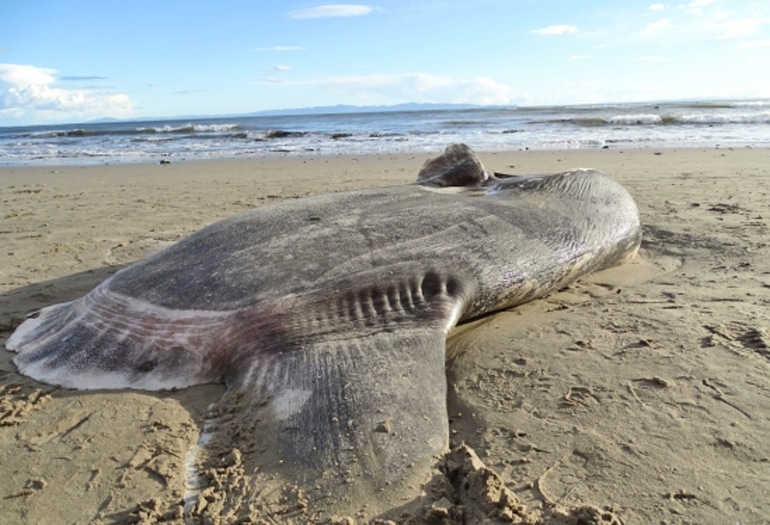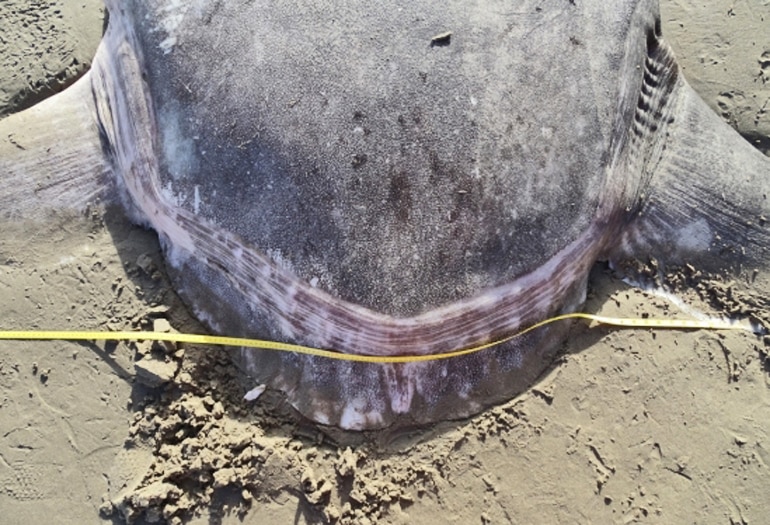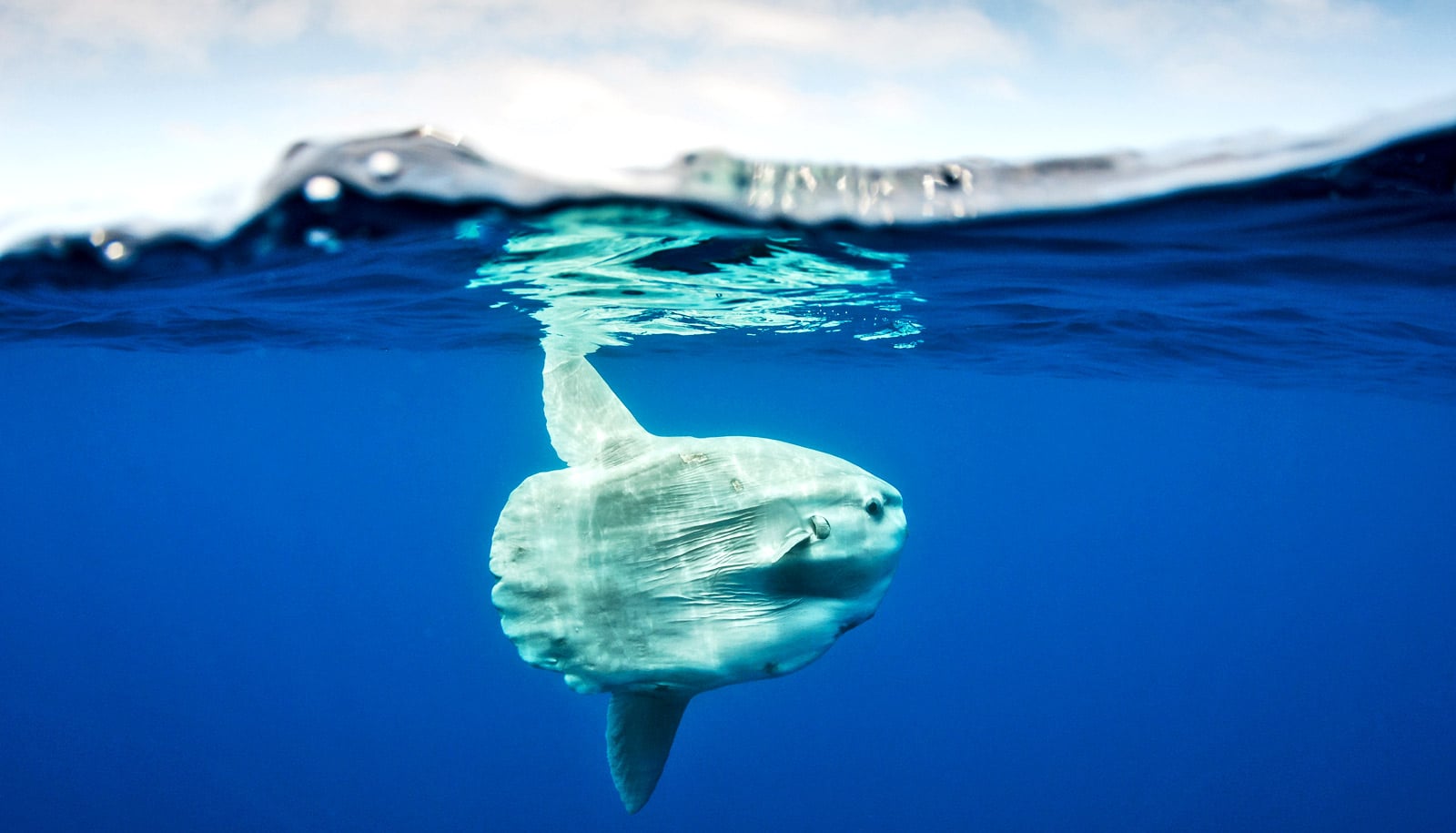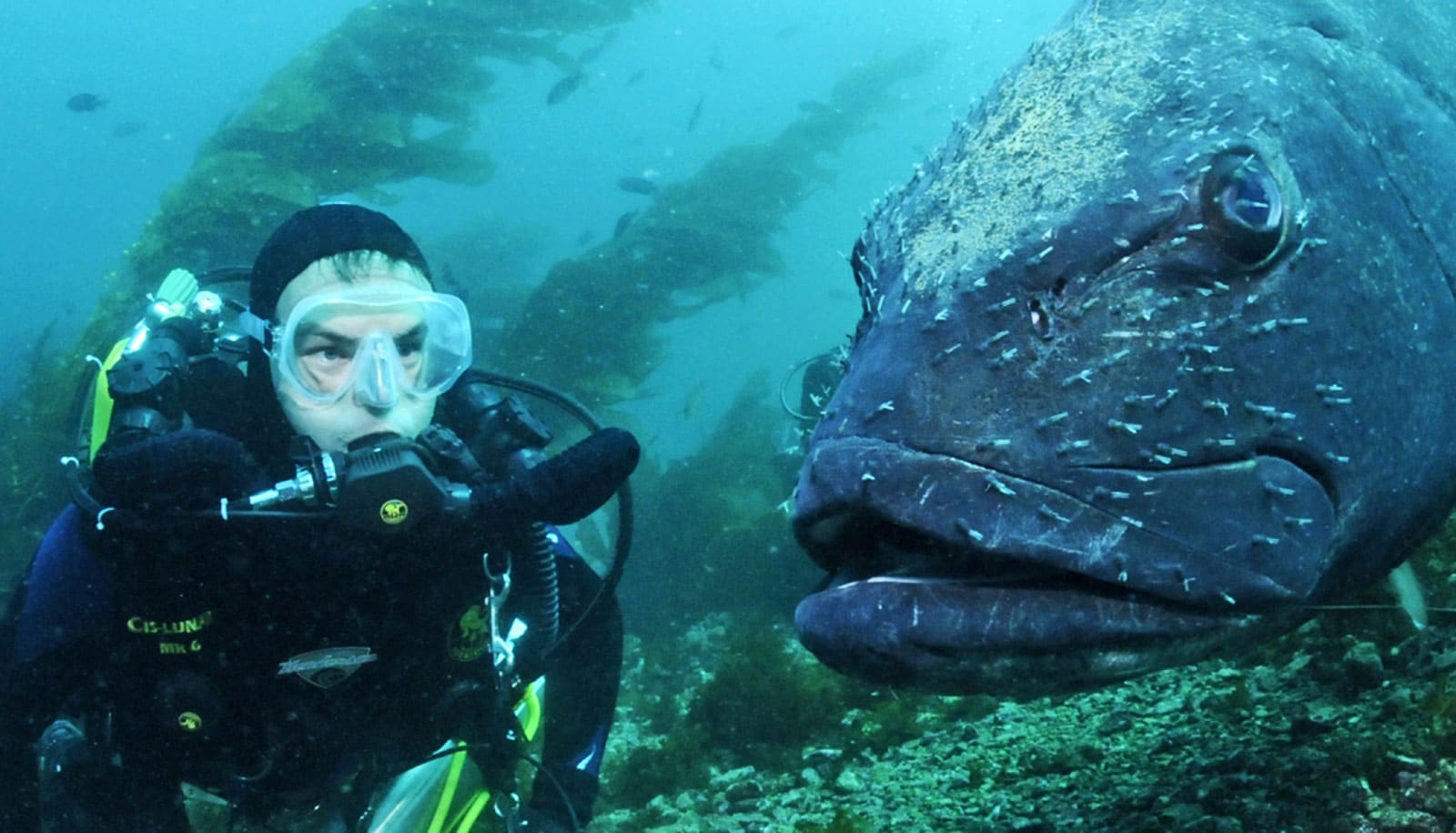Scientists have identified a fish that washed in with the tides last month in Goleta, California, as a hoodwinker sunfish—a rare species whose very existence was only first described in 2017.
The species has never before been observed in the Northern Hemisphere.
“It really was exciting to collect the photos and samples knowing that it could potentially be such an extraordinary sighting,” says Jessica Nielsen, a conservation specialist at the University of California, Santa Barbara’s Coal Oil Point Reserve, where the fish came ashore, who was the first to see the deceased fish and helped facilitate its identification.

“Mola tecta was just recently discovered so there is still so much to learn about this species. I’m so glad that we could help these researchers make the final definitive ID.
“This is certainly the most remarkable organism I have seen wash up on the beach in my four years at the reserve,” she adds.
It all began when an intern alerted Nielsen to the stranded sunfish. Her initial assumption: this was a mola mola, an ocean sunfish known to swim the Santa Barbara Channel. She took some photos and a few measurements and posted her finding on the reserve’s Facebook page.
As soon he saw Nielsen’s post, Thomas Turner, an associate professor in the ecology, evolution, and marine biology department, hustled down to the beach, family in tow, to see the fish for himself. Then he, in turn, posted some images of his own to iNaturalist, an online community for scientists where crowdsourced species identification is a hot pursuit.
Turner’s post caught the eye of two fish scientists from the other side of the earth, sunfish expert Marianne Nyegaard, of Murdoch University in Australia, and ichthyologist Ralph Foster, of South Australian Museum. The frequent collaborators suspected the Sands Beach wash-up could be a hoodwinker, but were hesitant to declare it so without definitive proof. Nyegaard is the one who discovered and described the hoodwinker in what became the first addition to the Mola genus in 125 years.
“I thought that the fish surely looked an awful lot like a hoodwinker, but frustratingly, none of the many photos showed the clavus (a diagnostic feature) clearly,” Nyegaard explains. “And with a fish so far out of range, I was extremely reluctant to call it a hoodwinker without clear and unambiguous evidence of its identity.”

Normally the scale, or denticle, structure of large sunfish serves as a reliable diagnostic, she notes, but the photos Turner and Nielsen had posted online lacked sufficient resolution for her to make any determination.
“I just couldn’t be sure due to pixilation and kept thinking I was totally being hoodwinked by this stranded sunfish,” continues Nyegaard, who actually named the hoodwinker for its elusive nature. “I emailed a bit with Ralph, and we discussed how this fish would have been a dead-set hoodwinker had it been within range in the temperate Southern Hemisphere. But I felt I needed to be absolutely 100-percent sure before settling on an ID, seeing as I had described the hoodwinker and would need to back up my ID with absolute certainty with a specimen so far away from home.”
What to do? Get better pictures and tissue samples. Nielsen and Turner were happy—downright thrilled, in fact—to help. But would the fish even still be there when they returned to Sands Beach?
Armed with specific instructions from Nyegaard what photographs and samples would be necessarily for a definitive ID, Turner and Nielsen waited for low tide. Then, starting two miles apart at opposite ends of the beach—Tom from the east, Jessica from the west—they walked toward each other.
“We met in the middle, at the fish, now a few hundred yards farther east,” Turner says. “Jessica took a fin sample to send to Marianne for DNA, and I took pictures of the field marks. It was iNaturalist at its best: experienced novice loops in expert, who loops in the expert, who then helps us learn about our find and gets information she will use in her research. And it was fun and exciting for all.”
Though it is unclear how the Mola tecta ended up so far from its known range in the Southern Hemisphere, having definitive identification is a crucial first step. And thanks to an enterprising conservationist, an organic collaboration between scientists near and far, and social media, that ID is now confirmed.
“Without attentive eyes, camera phones, and social media, the Australian ichthyologists would have never learned that this fish had just been seen for the first time in the Northern Hemisphere,” says Cris Sandoval, director of Coal Oil Point Reserve. “This type of crowd-sourced science is helping biologists map species in ways we could not have imagined just a few years ago.”
Source: UC Santa Barbara

